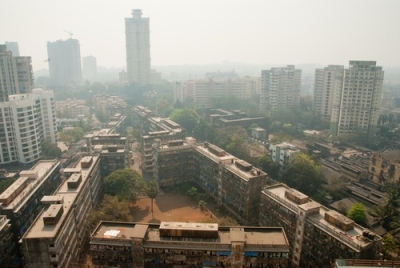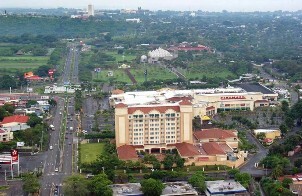Metropolization is the process of urban growth of a city and its constitution as the centrality of a Metropolitan region, that is, from an area composed of several municipalities that bring together the same spatial-territorial dynamics. The metropolis is now seen as the zone in which other cities become economically dependent and interconnected. Among the examples of metropolises in Brazil, we have the cities of São Paulo, Rio de Janeiro, Belo Horizonte, Salvador, Goiânia, Porto Alegre and many others.
To understand the logic of metropolization (and, later, demetropolization), it is necessary to consider the following basic premise: industrialization tends to induce urbanization, that is, when a city or a region becomes industrialized, the tendency is that, over time, its population rises, as well as the number of residences and the horizontal growth of its geographic space urban.
It was thus throughout history that he narrated the successive processes of industrialization around the world and their consequent urbanizations and metropolizations. In the eighteenth century, at the height of the Industrial Revolution, the great cities of Europe already had the largest populations in the world. However, the pace of population growth intensified more and more.
In the year 1850, London – then the main world center – reached three million inhabitants; 50 years later, this population already totaled seven million, thanks to the effects generated by the first two Industrial Revolutions. New York, thanks to the great migratory wave coming from Europe and the industrialization and financialization of its economy, was the first city to surpass 10 million inhabitants, in the 1930s.
Therefore, what we can notice is that the great capitals of the developed world were the first to industrialize and, therefore, the first cities to go through the metropolization process. Thus, until the mid-twentieth century, cities with large populations were synonymous with modernity, which changed in later decades.
From the second half of the 20th century, underdeveloped countries began to industrialize, thanks to the migration and expansion of industries and multinational companies that have settled in peripheral countries in search of easy access to raw materials, cheap labor and a large market consumer. Thus, countries such as Brazil learned about their metropolization processes, such as those that took place in São Paulo and Rio de Janeiro, which, at the end of the century, were transformed into megacities (cities with more than 10 million population).
The problems of metropolization
It is known that any urban formation that takes place in a fast and disorderly way causes various social upheavals and economic-structural problems. In the 18th and 19th centuries, the great cities of Europe experienced chaos thanks to the high rates of urban concentration and the terrible working conditions to which workers (the majority of the population) were submitted. Uncontrolled urbanization and the lack of structure for the population affect the formation of the process of urban macrocephaly.
Do not stop now... There's more after the advertising ;)
As a result, developed countries have adopted policies for ordering and controlling their cities, sometimes practicing urban reforms, sometimes revitalizing areas previously relegated to chance. Thus, cities like Paris, London and New York, despite still being large megalopolises, abandoned the world leadership in number of inhabitants. Currently, this post belongs – with the exception of Tokyo – to cities located in underdeveloped countries. These cities now suffer the same social upheavals that developed cities once suffered, with the grievance of not having the same financial resources to free themselves from their conditions of misery.
Demetropolization and the growth of medium-sized cities
You've probably heard the phrase "life in the big city isn't easy." Real estate is always more expensive (and also appreciates faster), traffic always presents problems, everything stays far from everything, not to mention environmental disturbances unique to cities, such as the Heat Islands and Inversion Thermal.

City of Mumbai (India), one of the largest cities in the world and with major urban, social and environmental problems
Due to this chaotic dynamics of large cities, their geographic space – except in a few cases, when good urban planning is carried out - it becomes unattractive for investment and for the installation of large companies. This factor, associated with the so-called “Fiscal War”, enables the formation of an old process in central countries and recent in emerging countries: a demetropolization.
This process occurs when there is a certain "escape" of companies that, due to the reasons explained above, migrate to the interior of the country or even to other regions of the globe, as long as this represents improvements in their services and an increase in their profits. In addition, in industrializing countries, the trend is to reduce the supply of raw materials and consolidation of labor rights, which does not interest the owners and shareholders of the companies that make up the bosom of the great capital.
Thus, while the occurrence of demetropolization of large cities is observed (and the consequent fall in population growth), there is an increase in the so-called Medium Cities and smaller metropolises. Therefore, there are great concerns that, with the disorderly growth of these cities, the urban problems previously experienced in large metropolises will be repeated. To avoid this process, the State needs to regulate the economy a little more, establishing criteria and limits for urbanization and industrialization of cities, in addition to promoting measures to reduce social inequalities and the adequacy of infrastructure on the outskirts of the major cities.
By Rodolfo Alves Pena
Graduated in Geography
In Brazil, as a result of the urbanization process, there was an intense metropolization, which resulted in:
a) medium-sized cities that industrialized after the economic opening of the 1990s, such as Campinas and Ouro Preto.
b) national metropolises, seats of the country's economic and political power, such as São Paulo, Brasília and Rio de Janeiro.
c) world cities, which received large foreign investments at the beginning of the 21st century, such as Belo Horizonte and Rio de Janeiro.
d) megacities spread across the country, thanks to the return of immigrants, such as Manaus, Goiânia and Curitiba.

